2020 BMW X1 vs. 2019 Audi Q3: Which Is the More Compelling Compact SUV?
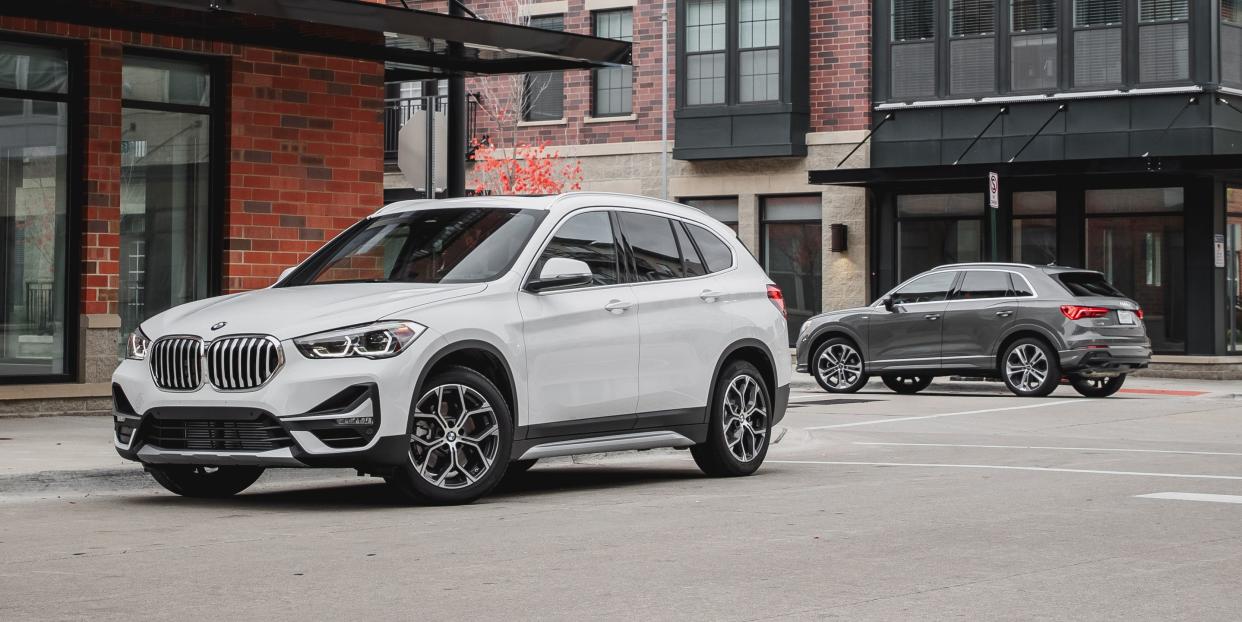

Compact premium SUVs have become red hot, with virtually every luxury manufacturer now playing in this rapidly growing segment. One of the fiercest rivalries within the class is between the Audi Q3 and the BMW X1—and it just intensified. This year, the all-new 2019 Audi Q3 finally replaces the first-generation model, introduced way back in 2011, which had grown gray around the temples. BMW's X1 has been around since 2009, but its second generation dropped in 2016 and has received a few updates for 2020, including a refreshed appearance and updated interior. So, is Audi's re-cast Q3 now the more compelling SUV?
The Matchup
To better compete with the more popular BMW X1, Audi has made the new 2019 Q3 larger. It grew 3.8 inches longer, nearly an inch wider, and 1.5 inches taller. It's now about an inch longer and wider than the BMW, which shares much of its chassis with the Mini Countryman. Audi has also stretched the Audi's wheelbase from 102.5 inches to 105.5 inches, making it 0.2-inch longer between the front and rear axles than the BMW. The larger Audi is also the heavier of the two, outweighing the 3724-pound BMW by roughly 200 pounds.

The BMW's svelte waistline helps give it a considerable acceleration advantage, as both SUVs are packing the same amount of power. Each features an all-aluminum double-overhead-cam four-cylinder with 2.0 liters of displacement and a turbocharger, and in a bizarre twist of engineering coincidence, both engines are rated to produce the same 228 horsepower and 258 lb-ft of torque. Each is also equipped with an eight-speed automatic transmission with Sport and manual modes.
These two crossovers also cost about the same. Each has a base price of around $36,000, but every Q3 comes with standard all-wheel drive. The base X1 sDrive28i is front-wheel drive, while the all-wheel-drive xDrive28i costs two grand more. Slather on the options, and this 2020 BMW X1 xDrive28i, which was equipped with the $5000 Premium package and a couple of other extras, has an sticker price of $45,520. That's just $530 more than this loaded-up 2019 Audi Q3 S Line 45 TFSI Quattro. Oh, another thing they have in common: Their name badges no longer bear any relationship to what's under their hoods. The model-numbers game is certifiably out of control.
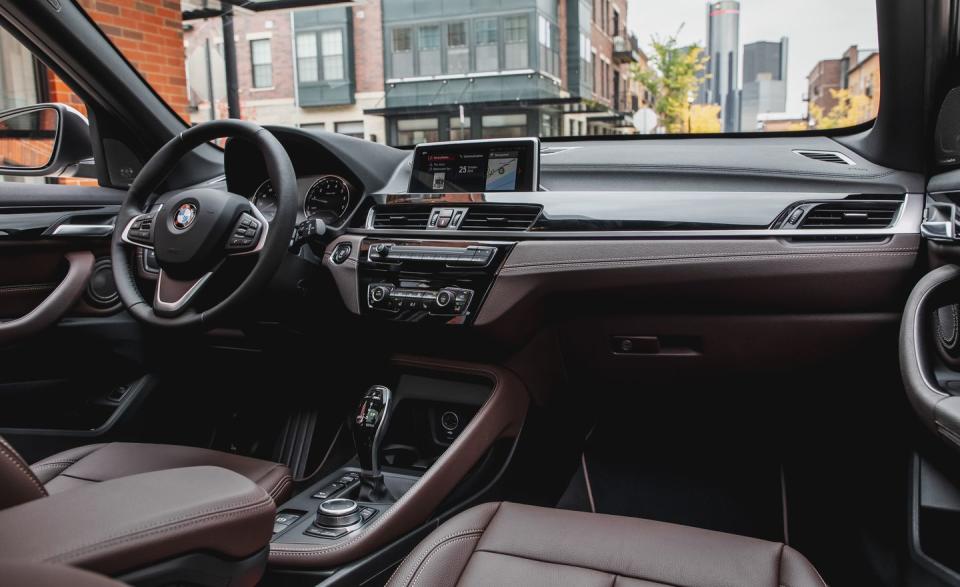
On the Road
Although their engines appear identical on paper, the BMW's 2.0-liter is the sportier of the two. It revs higher—all the way to 7000 rpm—and it sounds better than the Audi's engine. It's also smoother and more refined. We also prefer the X1's eight-speed automatic. It isn't just more responsive than the Audi's, it changes gears more quickly and with more precision. Unfortunately, the X1 does not have paddle shifters like the Q3, which seems like an oversight considering its performance. The Q3's powertrain is certainly satisfying, but BMW's is tuned to a higher level of excellence.
In a drag race, the lighter BMW also leaves the Audi choking in its dust. It sprints to 60 mph in 5.7 seconds, more than 1.5 seconds quicker than the Audi. It also blasts through the quarter mile in 14.4 seconds at 96 mph. By comparison, the Audi's 15.6-second performance at 91 mph feels kind of slow. By 100 mph, the gap between the two is more than three seconds. Despite that additional thrust, the BMW also gets considerably better gas mileage, with EPA ratings of 23 mpg city and 31 mph highway versus the Audi's 19 mpg city and 27 mpg highway.
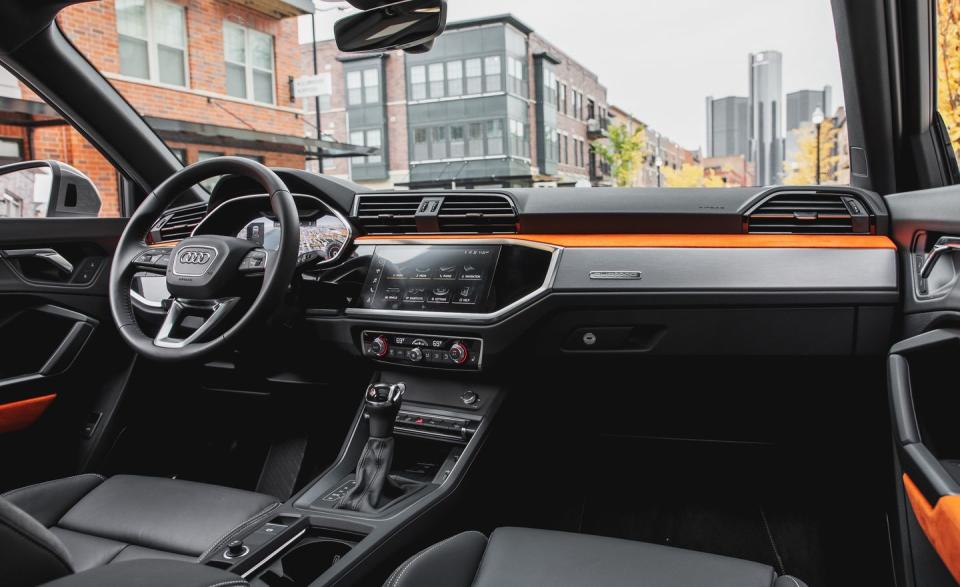
Around town, the Q3 feels sporty, with lighter and more immediate steering that offers more feel than the BMW's. However, larger potholes send an unwelcome shiver through its steering wheel and structure. Its ride is also busier than the X1's, due to a rear suspension that doesn't settle down as quickly as it should over undulating sections of road. On smoother roads, there's less road-surface intrusion inside the Audi, but the firmer suspension of the BMW is more controlled when the road is rough. Overall it's the BMW that feels more solid and is more fun to drive quickly down a twisty back road.
The Q3, however, does generate considerable grip on its optional 20-inch Bridgestone tires, which certainly don't help its ride comfort. It rang up 0.91 g on our 300-foot-diameter skidpad. The X1, riding on narrower 18-inch Pirellis, wasn't far behind at 0.87 g, and it understeers less than the Audi when pushed hard. The Q3's dynamic standout is its brakes, stopping the SUV from 70 mph in just 160 feet with no fade. The BMW was way behind, needing 184 feet to stop from the same speed, and its brakes showed moderate fade after repeated runs.
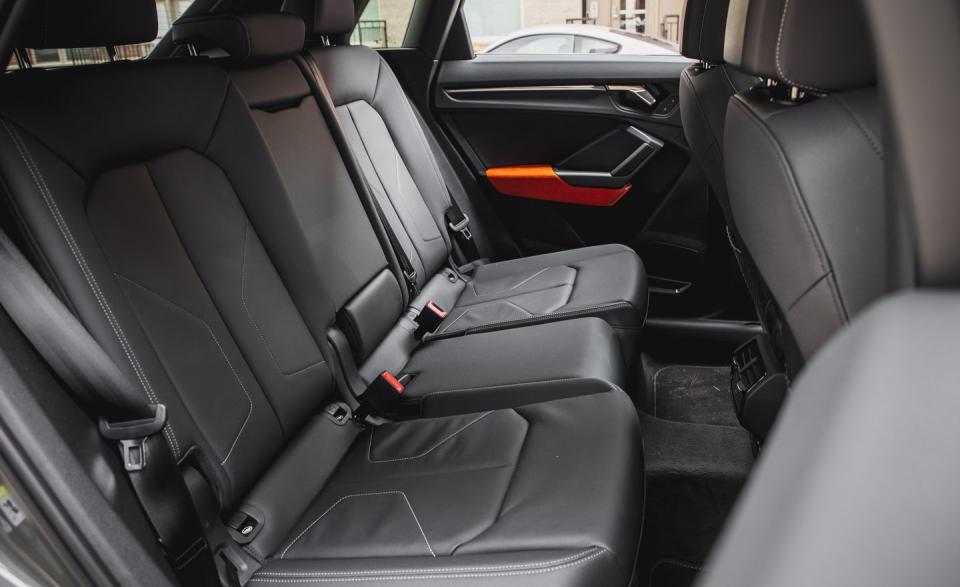
The Inside View
If you want space, you want the Audi. It feels larger inside, with considerably more elbow room up front and a much larger rear seat. The BMW's back seat is short on legroom. Passengers more than six feet tall will find their shins pressed against its front seat backs. It's also tight for three, and it forces your friends to sit uncomfortably upright. The Audi's rear seat doesn't feel cramped, and its rear bench is more softly padded and reclines, so it's more comfortable.
It's the BMW, however, that offers more cargo space, with 27.1 cubic feet versus the Audi's 23.7, and there's a ton of extra storage under the X1's trunk floor. This is because it's fitted with run-flat tires, so there's isn't a spare tire aboard as there is in the Q3.
From the driver's seat the BMW's interior feels more premium than the Audi's. The fluidity and effort of its controls are a notch higher quality than the Audi's bits, and there's less hard plastic in the X1. The BMW's overall interior design is more traditional. It isn't old fashioned in any way, but the Audi's interior design is exceedingly modern, with a more obvious Silicon Valley influence. The suede trim on its dash and doors is a cool touch, and its optional S Line sport seats feature more aggressive bolsters. It also offers more interior storage with a larger console and door bins.
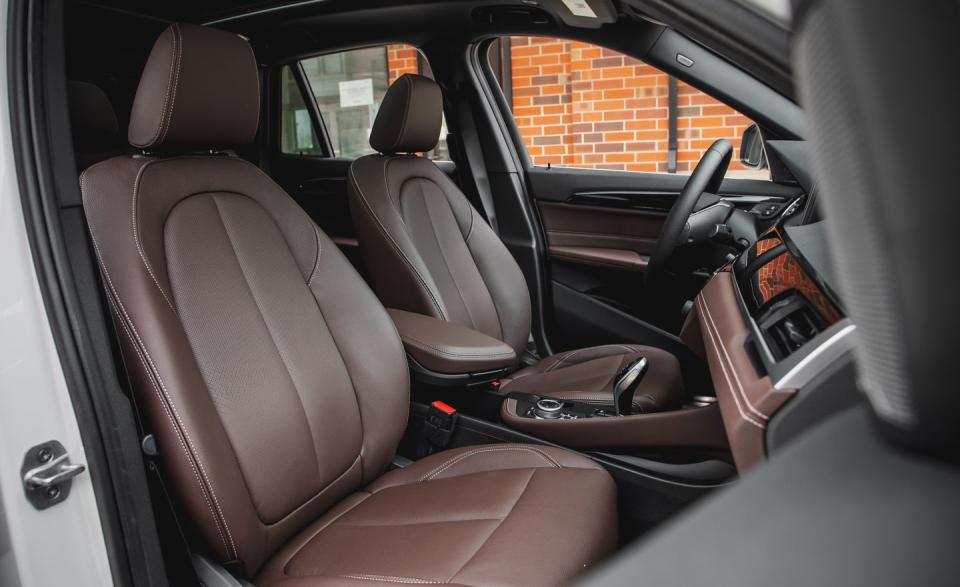
The Bottom Line
Audi has created a compelling package with the all-new 2019 Q3. It's better than its predecessor in every way, and it offers standard all-wheel drive and a far more spacious interior, which are certain to attract consumers. It also performs well, with more than enough acceleration and handling to satisfy the vast majority of buyers in this class.
But the finishing order of this comparison test is easily summed up by a single sentence in our notebook: “The Audi feels great until you drive the BMW.” The X1 is the one you want to drive. Its powertrain and chassis are far superior to the Audi's, and its interior, although less spacious, is constructed with better materials and to a higher level of quality. It's also more fuel efficient, and it has the greater cargo volume. Although it's easy to recommend the new Audi Q3, the BMW X1 is the winner of this comparison.
You Might Also Like

